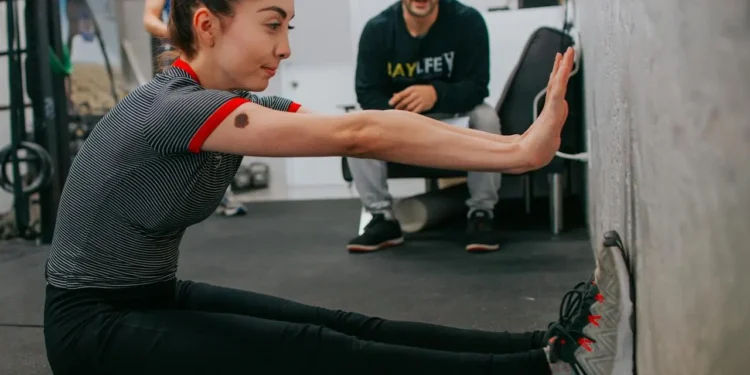Stepping into the world of fitness memberships options can feel more than a little overwhelming. A $10 gym sounds like a steal, until you start eyeing that $250/month boutique studio that promises group energy and eucalyptus towels.
Maybe your neighbor swears by CrossFit while your coworker won’t stop raving about their at-home bike setup.
With so many ways to work out (and just as many price tags), how do you decide what’s really worth your money?
The answer isn’t as simple as “always go cheap” or “you get what you pay for.” Instead, it’s about understanding your own fitness style, goals, and lifestyle, and spending accordingly.
When to Splurge: The High-Motivation Fitness Options
Boutique Studios and Specialty Classes
These fitness memberships include yoga studios, Pilates reformer classes, CrossFit boxes, cycling studios, and boot camps like Barry’s or Orangetheory.
Prices typically range from $20–$40 per class or $150–$300/month for unlimited access.
Splurge if:
- You thrive in a high-energy, structured environment
- You need extra accountability to stay consistent
- You want to build a social routine around your workouts
- You’re working toward a specific goal and benefit from expert instruction
Real Example: A $220/month unlimited membership at a boutique studio may seem steep, but if you go four times a week, that’s about $13.75 per class – cheaper than many drop-ins. Plus, you’re paying for the coaching, motivation, and environment that keeps you going back.
Look for studios that offer intro packages or free first classes to test the vibe before committing.
Personal Training
Hiring a personal trainer – either one-on-one or in a small group – can cost between $60 and $150 per session, depending on location and trainer experience.
Splurge if:
- You’re new to working out and want to build a safe, effective routine
- You’re recovering from an injury or managing a health issue
- You want highly personalized coaching to hit a specific goal
- You struggle to stay accountable on your own
A good trainer will help you improve your form, push past plateaus, and avoid injury. If weekly sessions are too pricey, even once-a-month check-ins with a customized plan can make a big difference.
When to Save: The Smart Fitness Budget Options
Budget Gyms and Community Centers
Chains like Planet Fitness, Crunch, and Anytime Fitness typically charge $10–$40/month, while local rec centers often fall into a similar price range with access to pools, weight rooms, and group classes.
Save if:
- You’re self-motivated and know how to structure your own workouts
- You don’t need bells and whistles – just the basics
- You’re trying to cut costs while staying active
- You’re using the gym for a specific purpose, like strength training or cardio
These spaces offer excellent cost-per-use value for people who don’t mind working out solo or creating their own programs. Some even include access to group classes or bring-a-friend perks.
Free Online Workouts
YouTube, Instagram, TikTok, and countless fitness apps offer free workouts in every category, from yoga to HIIT to strength training.
Save if:
- You prefer working out at home or on your own schedule
- You’re looking to stay fit without spending anything
- You’re trying out new styles of movement before committing to a paid option
- You already own basic workout equipment
Search “30-minute full body workout” on YouTube and you’ll find thousands of options. Instructors like Caroline Girvan, Yoga with Adriene, and Grow With Jo have built massive followings by offering completely free, high-quality classes.
This is one of the best zero-cost ways to stay active, and it’s totally flexible.
When to Invest: At-Home Equipment
Building your own home gym is a bigger upfront investment, but it can pay off over time.
Basic setups (a set of dumbbells, resistance bands, yoga mat, bench) can cost under $300. Mid-range investments (adjustable weights, kettlebells, rowing machines) may run between $500–$1,500. High-end systems (like Peloton, Tonal, or full racks) can cost $2,000 and up.
Invest if:
- You prefer working out on your own schedule
- You don’t enjoy the gym atmosphere
- You want to cut out your commute and save time
- You know you’ll use the equipment regularly
Real Example: A $1,000 home gym setup used 3 times a week for 3 years comes out to about $2.56 per workout, less than the cost of most classes, and available 24/7.
Buy gear gradually as your routine evolves, and look for secondhand deals to cut the cost.
The Minimalist Approach: Consistency Over Cost
Minimalists tend to avoid trendy memberships or giant home gyms. Instead, they focus on what actually gets them moving, with the least clutter and cost.
This approach involves:
- Sticking to simple bodyweight workouts or runs
- Investing in a few versatile items (like resistance bands or kettlebells)
- Repeating workouts you enjoy instead of always chasing the next thing
- Building a consistent routine you can take anywhere
Example: A $100 set of resistance bands used at home, in the park, and on the road could be all you need to maintain strength, flexibility, and fitness long-term, no monthly fees required.
Decision-Making Framework: Questions to Ask Yourself
Lifestyle and Usage Questions
- How often do I realistically work out each week?
- Do I prefer working out alone, in groups, or with a coach?
- Am I more likely to follow through at home or at a gym/studio?
- Do I enjoy variety or like doing the same routine?
Financial and Practical Questions
- Can I afford this monthly cost without going into debt or guilt?
- Will I use it enough to justify the cost-per-workout?
- Do I have space at home for equipment or need a gym for access?
- Is this something I’ll commit to long-term, or just testing out?
Red Flags: When Fitness Spending Becomes Overspending
Watch for these common traps when it comes to fitness memberships:
- “If I spend more, I’ll finally stay consistent” (motivation doesn’t always come with a price tag)
- “Everyone says this program works” (fitness is personal – what works for them may not work for you)
- “It’s an investment in my health” (true, but only if you actually use it!)
- “I deserve this” (yes, but make sure your budget agrees too)
The Middle Ground: Smart Splurging Strategies
There’s a sweet spot between overspending and under-investing. Here’s how to find it:
- Class packs instead of monthly unlimited memberships
- Off-peak pricing at studios and gyms
- Hybrid routines: mix home workouts with occasional in-person classes
- Used equipment to build a home gym without full price
- Affordable fitness apps that offer structure without the boutique cost (try FitOn, Nike Training Club, or Ladder)
Fitness Memberships: Spend or Splurge?
Smart fitness spending isn’t about having the fanciest setup.
It’s about knowing what works for you. Whether that’s a $10 gym, $300 studio, or a yoga mat in your living room, the best option is the one you’ll actually use.
Consistency matters more than cost. Spend when it adds value, save when free works just fine, and build a routine that feels good for your body and your budget.
Conscious Spending: Splurge on What’s Important, Save on What’s Not



















